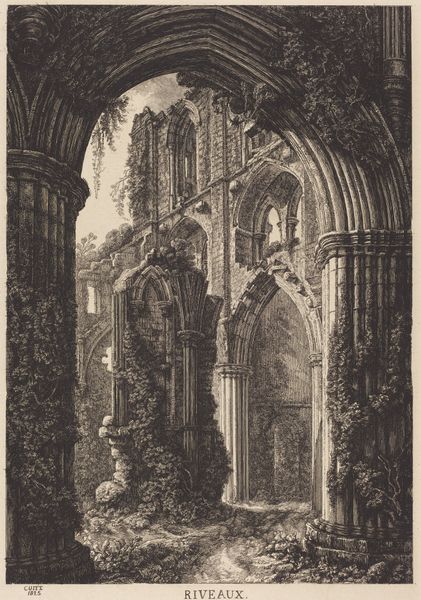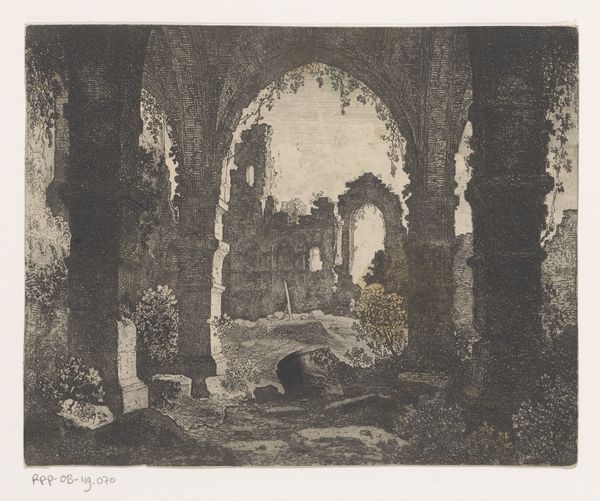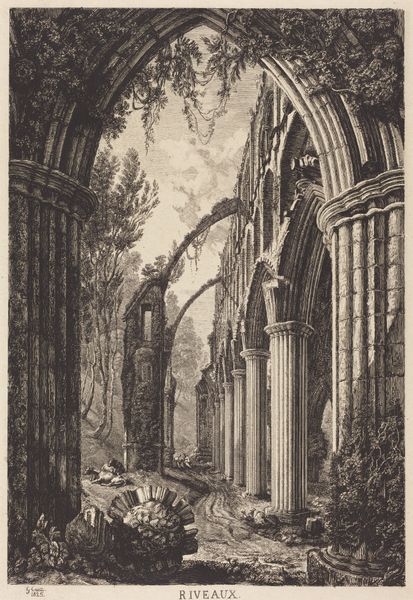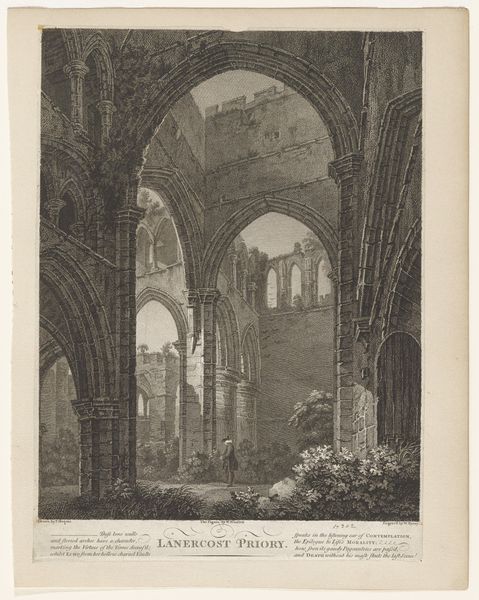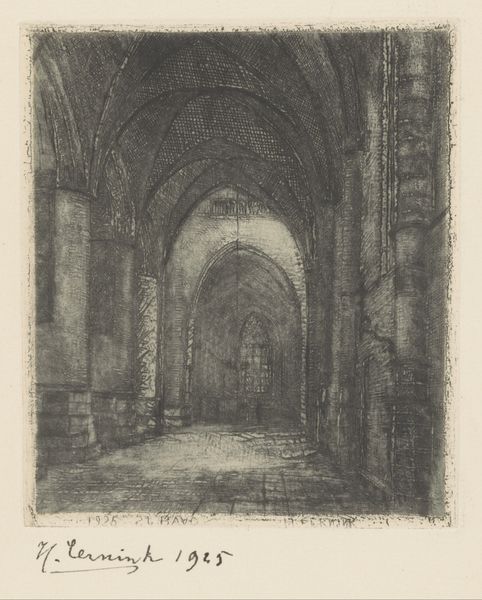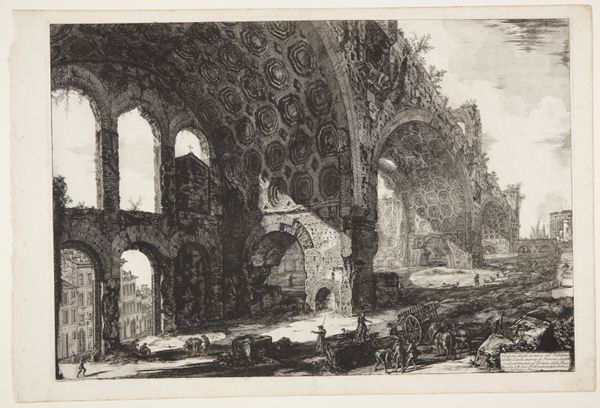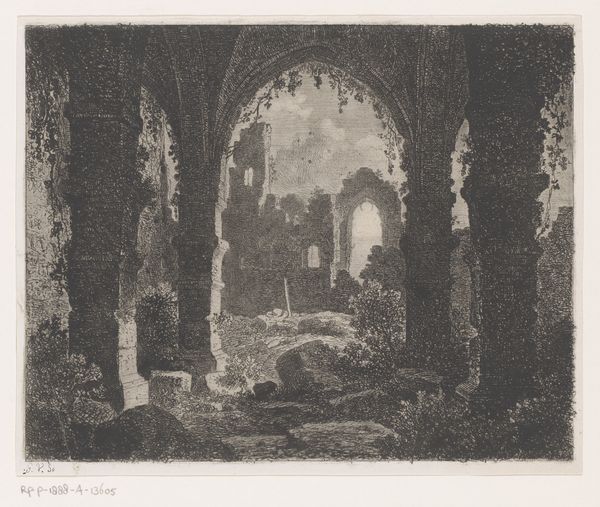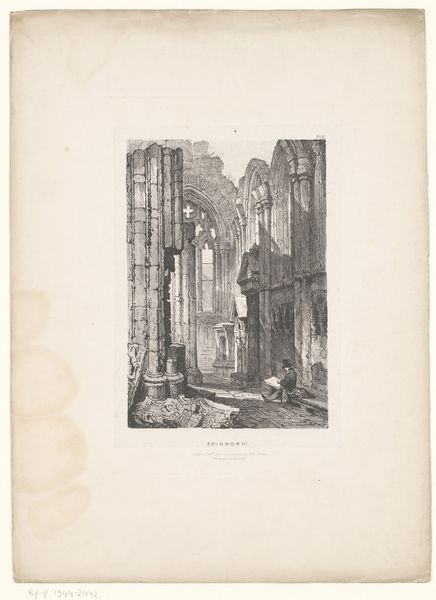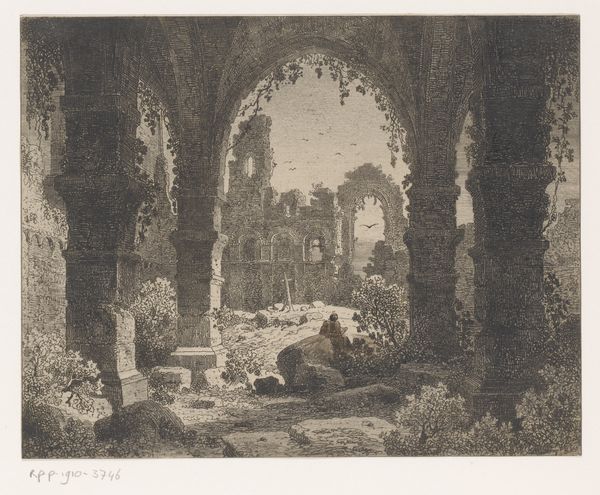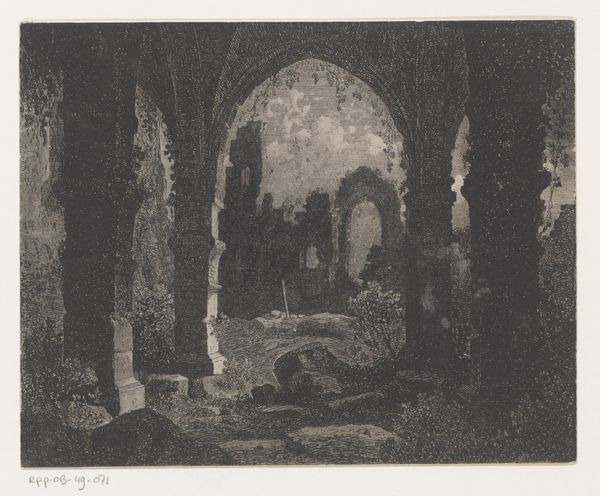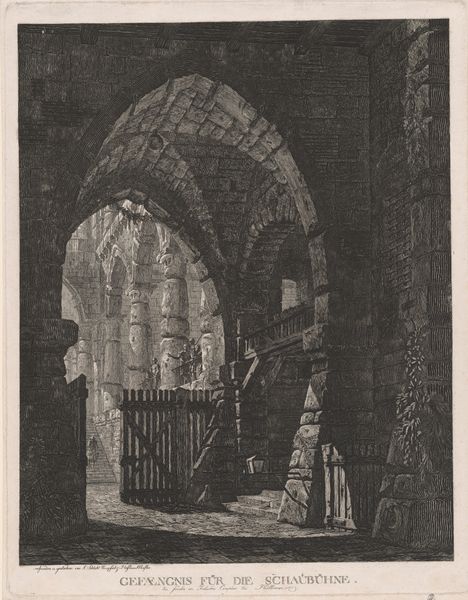
drawing, print, etching
#
drawing
# print
#
etching
#
landscape
#
form
#
romanesque
#
line
Dimensions: height 349 mm, width 259 mm
Copyright: Rijks Museum: Open Domain
Editor: This is "Ruïnes van de Abdij van Villers," an 1879 etching by Maria van Hohenzollern-Sigmaringen. I’m struck by the dense layering of lines and how it creates such a somber mood, like nature reclaiming a forgotten space. What stands out to you as you look at this etching? Curator: It’s fascinating how the artist captures the ruins, not just as physical structures, but as vessels of memory. The Romanesque arches, now overgrown, evoke centuries of religious practice and community life. Consider how ruins themselves act as symbols. They represent not only decay, but the persistent echoes of past beliefs and power structures. The light filtering through the broken arches – does that remind you of anything? Editor: Sort of, I’m reminded of Gothic cathedrals with light representing a connection to the divine. But here, that connection seems broken or obscured. Curator: Precisely! The "line" style in the print feels deliberate. Note the intricate detail juxtaposed with the clear decay. It begs the question: what's being illuminated and what’s being left in the shadows? Are we witnessing the triumph of nature, or a lament for lost faith? The image makes a potent statement about how our psychological state is also reflected through landscapes. Editor: I hadn't considered the ruins as symbols carrying such weight. The contrast between the natural overgrowth and the rigid architecture now speaks to me about impermanence and adaptation. Curator: And think of how these images can trigger collective memory. Etchings like this contributed to a shared understanding, perhaps even a romanticization, of the past during the 19th century. Ultimately, the ruins aren't just stones and mortar; they’re mirrors reflecting our own anxieties and aspirations.
Comments
No comments
Be the first to comment and join the conversation on the ultimate creative platform.
